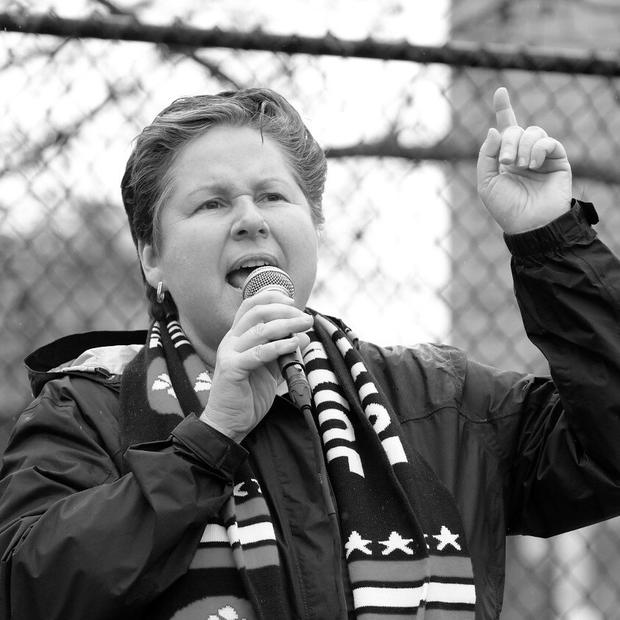The Seattle City Council this week (March 21) unanimously followed Mayor Mike McGinn’s recommendation and approved sending the $231 million dollar Families and Education Levy to the November ballot. To say that this levy is making its way to the voters with the worst possible sense of timing is an extraordinary understatement. No need to revisit the trials and travails of Seattle Public Schools in light of ongoing events, but if you really need a recap, just read Knute Burger’s recent story.
Beyond the obvious, there’s an underlying unease you hear muttered at the bus stop, the grocery store and the local java joint, even among previous levy supporters: Will adding more money, nearly doubling the last levy, actually fix anything? And, for a levy that’s been around since 1990, shouldn’t something have been fixed by now? What, exactly, has the money done in the last 21 years, and what will it really buy us in the next seven?
Without hopping on a soapbox of defensiveness, those are the critical questions levy proponents are going to need to answer for an ever-skeptical voting public. Note to the campaign team soon to be running the levy: It’s not going to be enough to just say, “C’mon, it’s for the kids,” or some variation on that theme.
Don’t trot out the same multipage reports and charts that take hours to wade through without a satisfying resolution. Do recognize that every time you mention the goal for the new levy — “All children will graduate from school college/career ready” — the disbelief around town regarding whether Seattle Public Schools can ever achieve that goal grows, rather than dissipates.
When the first Families and Education Levy passed, supporters told the public it would help do two things: close the achievement gap and allow more students to finish school. I do believe the levy has accomplished at least some measure of those goals and that we are far better off than if it had never existed.
It’s seemingly impossible to get levy detractors to acknowledge any levy success, however. Maybe that's because they also have a hard time acknowledging that the issues surrounding the achievement gap, and what’s need for graduation in 2011 and beyond, are far more complex than they were in 1990.
One way to lessen the resistance could be to pick one of the goals contained in the levy, and rally the broader community around it with the same fervor and commitment Mayor Norm Rice was able to instill back in 1990. How about this one: Through third grade, children are learning to read; after third grade, children are reading to learn. If a child cannot read at the third-grade level in third grade, then s/he will just keep falling further and further behind.
Don’t agree? In a fairly exhaustive cohort study of more than 26,000 Chicago public-school students, researchers Joy Lesnick, Robert M. Goerge, Cheryl Smithgall, and Julia Gwynne concluded that third-grade reading levels were key indicators of future academic achievement. From the full report:
Findings from this study are consistent with existing literature that emphasizes the importance of early reading ability for future educational success. Third-grade reading level was shown to be a significant predictor of eighth-grade reading level and ninth-grade course performance even after accounting for demographic characteristics and how a child’s school influences their individual performance. Third-grade reading level was also shown to be a predictor of graduation and college attendance, even when demographic characteristics were included as controls.
Right now a student entering kindergarten in Seattle Public Schools has a 50 percent chance of reading at grade level by the third grade. Want to see more success? Invest in the “prevention” that is reading at grade level. Hey Mayor, Council, Business Leaders Small and Large, Educational Advocates, Philanthropic Community and Parents: Commit to making this number 100 percent by 2015, so that each kindergartner entering Seattle Public Schools this fall meets the standard. That’s the first and most critical benchmark we have to accomplish to get our students and schools back on track.
And the first step to meeting that benchmark is passing the levy. But it’s hardly the only step. With 58 elementary schools, it’s going to take thousands of volunteer tutors and mentors outside of the levy to make this a reality. What if we could inspire every able adult in Seattle to give one hour a week to this effort? Project Mentor in Columbus, Ohio, is one example of how to structure this.
I bet we could make those detractors lose all credibility with taxpayers if we could rally together to hit that goal by 2015. And, if we commit to it, or something else that shows a tangible, hard-to-argue-with impact to taxpayers, we’ll finally have accomplished a much needed “A” for our children and for Seattle Public Schools.



